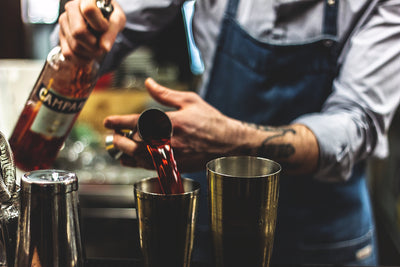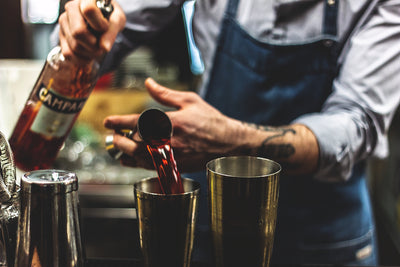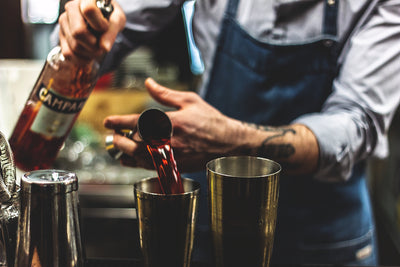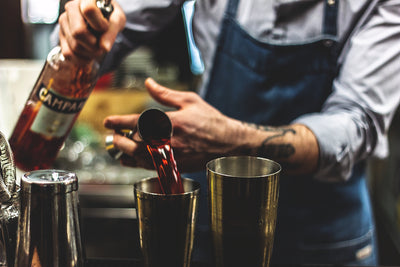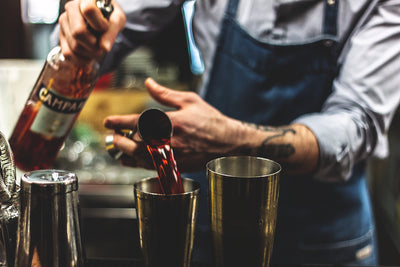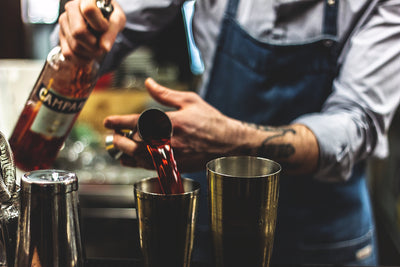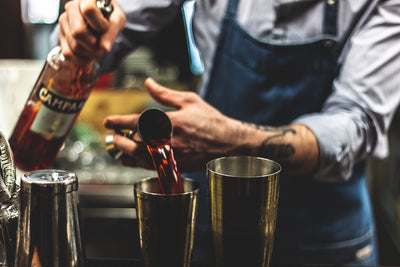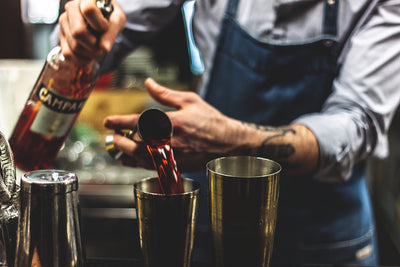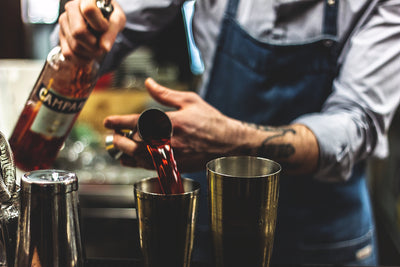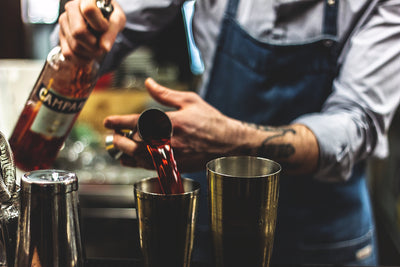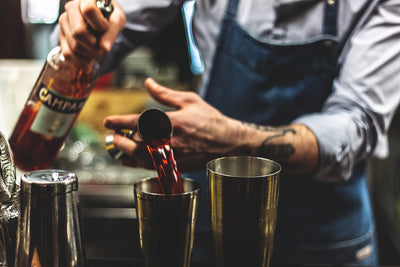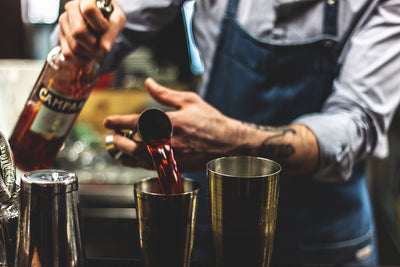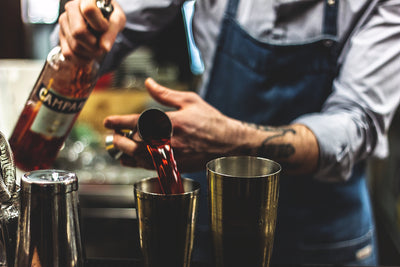Bar Spoon: What is a Bar Spoon and How is it used?

Enhancing Bar Operations with Bar Spoons: A Comprehensive Overview
So what is a bar spoon? The bar spoon, an indispensable tool in the art of mixology, is distinguished by its elongated handle, which is typically adorned with a distinctive twisted or spiral pattern, culminating in a small, flat, or sometimes disc-shaped bowl. This tool's design is not merely for aesthetic appeal but serves multiple functional purposes in the crafting of cocktails. Here's an in-depth look at the multifaceted roles and historical context of the bar spoon:
Historical Evolution: The bar spoon's history is intertwined with the evolution of cocktail culture. Originating from the 19th century, when cocktails began to gain popularity, the bar spoon has evolved from a simple stirring implement to a symbol of the bartender's craft. Its design, especially the twisted handle, is believed to have roots in the Prohibition era, serving as a visual and functional hallmark of speakeasy mixology.
Stirring with Precision: The quintessential use of the bar spoon is to stir cocktails meticulously. The tool's elongated handle ensures that the bartender can stir the mix with ease, reaching the depths of tall shakers or mixing glasses. This method is crucial for cocktails that demand a gentle blend to maintain clarity and texture without introducing air bubbles, ensuring a smooth, well-integrated drink.
Mastering the Art of Layering: The bar spoon's design is ingeniously crafted for the delicate task of layering drinks. By allowing liquids to gently flow over its flat end, bartenders can create visually stunning layered cocktails where ingredients stratify according to their density. This technique is key for crafting iconic drinks like the Pousse Café.
A Tool for Muddling: In the absence of a muddler, the bar spoon's sturdy handle can be employed for a gentle muddling of ingredients. This is particularly useful for bruising herbs or releasing the essence of fruits directly in the glass, a technique essential for cocktails like the Mojito or Old Fashioned.
Measuring and Garnishing: Some bar spoons are designed with a measure on one end, serving as a jigger for precise liquid measurements. Additionally, the spoon can be used for placing and adjusting garnishes in drinks, ensuring each cocktail is presented with perfection.
Material and Design Variations: Modern bar spoons come in various materials, including stainless steel, copper, and even gold plating, catering to the aesthetic and practical preferences of bartenders. The choice of material can influence the spoon's weight, balance, and thermal conductivity, which can subtly affect the stirring process and the final temperature of the drink.
Training and Technique: Mastering the bar spoon requires practice and skill. Bartenders often develop their unique stirring techniques, using the spoon's design to create vortexes that efficiently mix ingredients without compromising the drink's integrity.
In conclusion, the bar spoon is much more than a simple utensil; it is a testament to the bartender's skill and a crucial component of the cocktail-making process. Its design reflects the intricate balance between functionality and aesthetics in mixology, making it a staple in bars around the world.
DECANTER: WHAT IS A DECANTER AND HOW IS IT USED?
BOSTON SHAKER: WHAT IS A BOSTON SHAKER AND HOW TO USE IT?
MUDDLER: WHAT IS A MUDDLER AND HOW IS IT USED?
HAWTHORNE STRAINER: WHAT IS A HAWTHORNE STRAINER AND HOW IS IT USED?
Frequently asked question about bar spoons
What is the History of the Bar Spoon?
The evolution of modern bar spoons is rooted in history, stemming from several historical spoons. From the dual-purpose Sucket—named after an English dessert, providing a tool for stirring drinks and picking out fruits—to the Mazagran, which originated in French apothecaries for crushing medicines. The Mazagran spoon, named after an Algerian town, was also used for crushing hard beet sugar in a popular coffee drink post-war. Today's sleek and minimalist bar spoon designs bear the influence of these historical versions, though the forked end is less common now.
What is a Bar Spoon?
Essential in the art of cocktail making, a bar spoon is more than just a spoon; it's a versatile tool designed for crafting cocktails. Its primary role is to stir drinks to perfection, but its functionalities extend to measuring, muddling, and even cracking ice, depending on the type. There are different types of bar spoons:
- American Bar Spoons typically feature a twisted handle and a standard teaspoon measurement, ideal for precise liquid measuring.
- European Bar Spoons boast a flatter end, perfect for layering liquids and muddling ingredients, with a half teaspoon capacity.
- Japanese Bar Spoons are known for their length, skinniness, and weighted teardrop end, making them a favorite for their ease of use and multifunctionality.
Choosing the right bar spoon depends on your needs, but it's advisable to opt for one without lacquers to avoid flaking in your drinks.
How to Use a Bar Spoon?
Mastering the use of a bar spoon ensures your cocktails are stirred smoothly and thoroughly mixed. The key steps include:
- Inserting the Spoon: Slide the spoon into the glass against the edge to minimize disturbance, with the concave side facing inwards.
- Proper Grip: Hold the spoon like a pencil for better control during stirring.
- Stirring Technique: Stir around the glass edge in a circular motion, keeping the spoon's concave side inwards, and alternate directions occasionally for a thorough mix.
The twisted handle of the bar spoon is not just for aesthetics; it aids in smooth stirring and allows for spill-free pouring when layering drinks or adding carbonated mixers.
What Are The Types of Bar Spoon?
Bar spoons come in various styles, notably Japanese, European, and American versions, each with unique features catering to different aspects of cocktail making, from elegant stirring to practical ingredient muddling.
How Much is a Bar Spoon?
Bar spoons are an affordable addition to your cocktail toolkit, with prices starting around $3-5 on platforms like Amazon, Cocktail Kingdom, and Drinkstuff, making them accessible for both amateur and professional bartenders.
